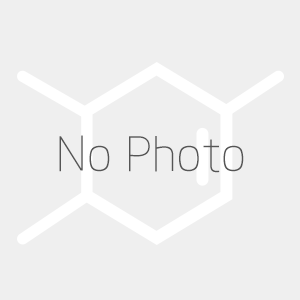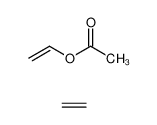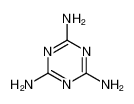| Product name | thiophenol |
|---|
| Product number | - |
|---|---|
| Other names | phenyl mercaptan |
| Identified uses | For industry use only. Food additives -> Flavoring Agents |
|---|---|
| Uses advised against | no data available |
| Company | MOLBASE (Shanghai) Biotechnology Co., Ltd. |
|---|---|
| Address | Floor 4 & 5, Building 12, No. 1001 North Qinzhou Road, Xuhui District, Shanghai, China |
| Telephone | +86(21)64956998 |
| Fax | +86(21)54365166 |
| Emergency phone number | +86-400-6021-666 |
|---|---|
| Service hours | Monday to Friday, 9am-5pm (Standard time zone: UTC/GMT +8 hours). |
Flammable liquids, Category 4
Acute toxicity - Oral, Category 2
Acute toxicity - Dermal, Category 2
Skin irritation, Category 2
Eye irritation, Category 2A
Acute toxicity - Inhalation, Category 1
Reproductive toxicity, Category 2
Specific target organ toxicity – single exposure, Category 2
Specific target organ toxicity – single exposure, Category 3
Specific target organ toxicity – repeated exposure, Category 1
Hazardous to the aquatic environment, short-term (Acute) - Category Acute 1
2.2 GHS label elements, including precautionary statements| Pictogram(s) | 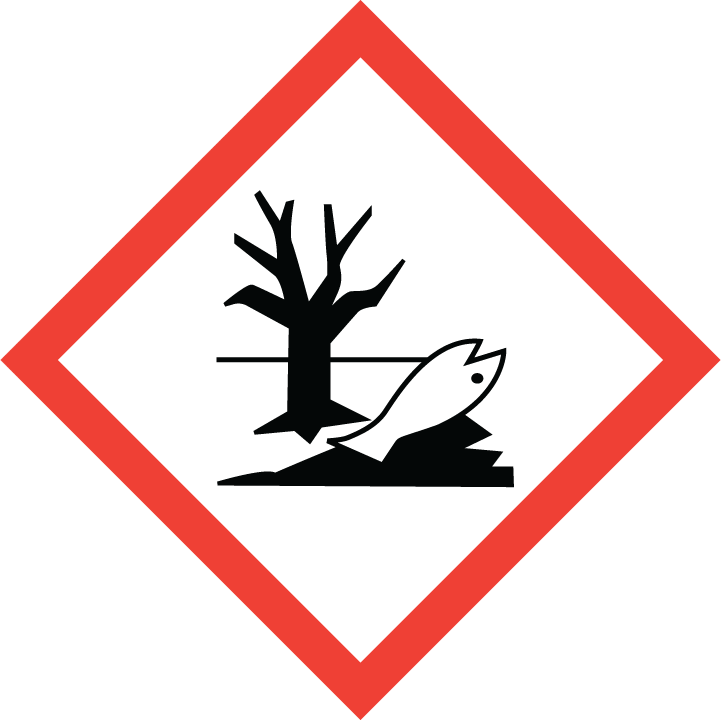 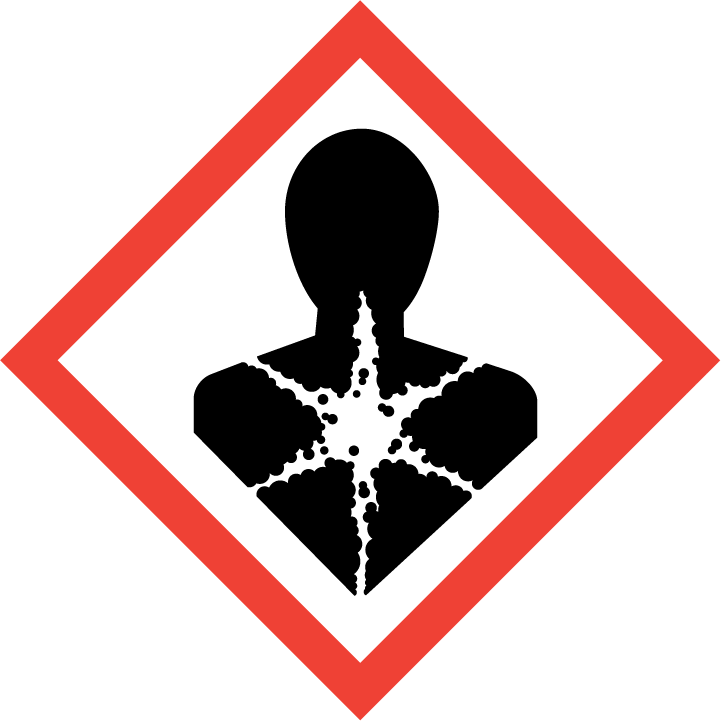 |
|---|---|
| Signal word | No signal word. |
| Hazard statement(s) | H226 Flammable liquid and vapour H300 Fatal if swallowed H310 Fatal in contact with skin H315 Causes skin irritation H319 Causes serious eye irritation H330 Fatal if inhaled H335 May cause respiratory irritation H361 Suspected of damaging fertility or the unborn child H372 Causes damage to organs through prolonged or repeated exposure H400 Very toxic to aquatic life H410 Very toxic to aquatic life with long lasting effects |
| Precautionary statement(s) | |
| Prevention | P210 Keep away from heat, hot surfaces, sparks, open flames and other ignition sources. No smoking. P280 Wear protective gloves/protective clothing/eye protection/face protection. P264 Wash ... thoroughly after handling. P270 Do not eat, drink or smoke when using this product. P262 Do not get in eyes, on skin, or on clothing. P260 Do not breathe dust/fume/gas/mist/vapours/spray. P271 Use only outdoors or in a well-ventilated area. P284 [In case of inadequate ventilation] wear respiratory protection. P201 Obtain special instructions before use. P202 Do not handle until all safety precautions have been read and understood. P261 Avoid breathing dust/fume/gas/mist/vapours/spray. P273 Avoid release to the environment. |
| Response | P370+P378 In case of fire: Use ... to extinguish. P301+P310 IF SWALLOWED: Immediately call a POISON CENTER/doctor/… P321 Specific treatment (see ... on this label). P330 Rinse mouth. P302+P352 IF ON SKIN: Wash with plenty of water/... P310 Immediately call a POISON CENTER/doctor/… P361+P364 Take off immediately all contaminated clothing and wash it before reuse. P332+P313 If skin irritation occurs: Get medical advice/attention. P362+P364 Take off contaminated clothing and wash it before reuse. P305+P351+P338 IF IN EYES: Rinse cautiously with water for several minutes. Remove contact lenses, if present and easy to do. Continue rinsing. P337+P313 If eye irritation persists: Get medical advice/attention. P304+P340 IF INHALED: Remove person to fresh air and keep comfortable for breathing. P320 Specific treatment is urgent (see ... on this label). P308+P313 IF exposed or concerned: Get medical advice/ attention. P308+P311 IF exposed or concerned: Call a POISON CENTER/doctor/... P312 Call a POISON CENTER/doctor/…if you feel unwell. P314 Get medical advice/attention if you feel unwell. P391 Collect spillage. |
| Storage | P403 Store in a well-ventilated place. P405 Store locked up. P403+P233 Store in a well-ventilated place. Keep container tightly closed. |
| Disposal | P501 Dispose of contents/container to ... |
none
3.Composition/information on ingredients 3.1 Substances| Chemical name | Common names and synonyms | CAS number | EC number | Concentration |
|---|---|---|---|---|
| thiophenol | thiophenol | 108-98-5 | none | 100% |
Consult a physician. Show this safety data sheet to the doctor in attendance.
If inhaledFresh air, rest. Refer for medical attention.
In case of skin contactRemove contaminated clothes. Rinse skin with plenty of water or shower. Refer for medical attention .
In case of eye contactFirst rinse with plenty of water for several minutes (remove contact lenses if easily possible), then refer for medical attention.
If swallowedRinse mouth. Refer for medical attention .
4.2 Most important symptoms/effects, acute and delayedMarked potential for causing eye changes. May cause death (EPA, 1998)
4.3 Indication of immediate medical attention and special treatment needed, if necessaryImmediate first aid: Ensure that adequate decontamination has been carried out. If patient is not breathing, start artificial respiration, preferably with a demand-valve resuscitator, bag-valve-mask device, or pocket mask, as trained. Perform CPR as necessary. Immediately flush contaminated eyes with gently flowing water. Do not induce vomiting. If vomiting occurs, lean patient forward or place on left side (head-down position, if possible) to maintain an open airway and prevent aspiration. Keep patient quiet and maintain normal body temperature. Obtain medical attention. /Sulfur and related compounds/
5.Fire-fighting measures 5.1 Extinguishing media Suitable extinguishing mediaIf material on fire or involved in fire: Do not extinguish fire unless flow can be stopped. Use water in flooding quantities as fog. Cool all affected containers with flooding quantities of water. Apply water from as far a distance as possible. Solid streams of water may be ineffective. Use foam, dry chemical, or carbon dioxide. /Phenyl mercaptan/
5.2 Specific hazards arising from the chemicalWhen heated to decomposition or on contact with acids, it emits toxic fumes of sulfur oxides. May be ignited by heat, sparks or flames. Container may explode in heat of fire. Vapor explosion and poison hazard indoors, outdoors or in sewers. Unstable, oxidizes in air. Avoid contact with acids. (EPA, 1998)
5.3 Special protective actions for fire-fightersWear self-contained breathing apparatus for firefighting if necessary.
6.Accidental release measures 6.1 Personal precautions, protective equipment and emergency proceduresUse personal protective equipment. Avoid dust formation. Avoid breathing vapours, mist or gas. Ensure adequate ventilation. Evacuate personnel to safe areas. Avoid breathing dust. For personal protection see section 8.
6.2 Environmental precautionsPersonal protection: chemical protection suit including self-contained breathing apparatus. Collect leaking and spilled liquid in sealable containers as far as possible. Absorb remaining liquid in sand or inert absorbent. Then store and dispose of according to local regulations.
6.3 Methods and materials for containment and cleaning upEnvironmental considerations: Land spill: Dig a pit, pond, lagoon, holding area to contain liquid or solid material. /SRP: If time permits, pits, ponds, lagoons, soak holes, or holding areas should be sealed with an impermeable flexible membrane liner./ Dike surface flow using soil, sand bags, foamed polyurethane, or foamed concrete. Absorb bulk liquid with fly ash, cement powder, or commercial sorbents. /Phenyl mercaptan/
7.Handling and storage 7.1 Precautions for safe handlingAvoid contact with skin and eyes. Avoid formation of dust and aerosols. Avoid exposure - obtain special instructions before use.Provide appropriate exhaust ventilation at places where dust is formed. For precautions see section 2.2.
7.2 Conditions for safe storage, including any incompatibilitiesSeparated from strong oxidants, strong acids and food and feedstuffs.Conditions for safe storage, including any incompatibilities: Store in cool place. Keep container tightly closed in a dry and well-ventilated place. Containers which are opened must be carefully resealed and kept upright to prevent leakage.
8.Exposure controls/personal protection 8.1 Control parameters Occupational Exposure limit valuesRecommended Exposure Limit: 15 Minute Ceiling Value: 0.1 ppm (0.5 mg/cu m).
Biological limit valuesno data available
8.2 Appropriate engineering controlsHandle in accordance with good industrial hygiene and safety practice. Wash hands before breaks and at the end of workday.
8.3 Individual protection measures, such as personal protective equipment (PPE) Eye/face protectionSafety glasses with side-shields conforming to EN166. Use equipment for eye protection tested and approved under appropriate government standards such as NIOSH (US) or EN 166(EU).
Skin protectionWear impervious clothing. The type of protective equipment must be selected according to the concentration and amount of the dangerous substance at the specific workplace. Handle with gloves. Gloves must be inspected prior to use. Use proper glove removal technique(without touching glove's outer surface) to avoid skin contact with this product. Dispose of contaminated gloves after use in accordance with applicable laws and good laboratory practices. Wash and dry hands. The selected protective gloves have to satisfy the specifications of EU Directive 89/686/EEC and the standard EN 374 derived from it.
Respiratory protectionWear dust mask when handling large quantities.
Thermal hazardsno data available
9.Physical and chemical properties| Physical state | clear liquid with a repulsive odor |
|---|---|
| Colour | Water-white liquid |
| Odour | Repulsive, penetrating, garlic-like odor, especially when impure |
| Melting point/ freezing point | -15ºC |
| Boiling point or initial boiling point and boiling range | 169°C(lit.) |
| Flammability | Class II Combustible Liquid: Fl.P. at or above 37.78°C and below 60°C.Flammable. Gives off irritating or toxic fumes (or gases) in a fire. |
| Lower and upper explosion limit / flammability limit | no data available |
| Flash point | 50°C |
| Auto-ignition temperature | no data available |
| Decomposition temperature | no data available |
| pH | Feebly acidic |
| Kinematic viscosity | no data available |
| Solubility | In water:insoluble |
| Partition coefficient n-octanol/water (log value) | log Kow = 2.52 |
| Vapour pressure | 1.4 mm Hg ( 20 °C) |
| Density and/or relative density | 1.073g/mLat 25°C(lit.) |
| Relative vapour density | 3.8 (vs air) |
| Particle characteristics | no data available |
no data available
10.2 Chemical stabilityStable under recommended storage conditions.
10.3 Possibility of hazardous reactionsFlammable liquidPHENYL MERCAPTAN reacts with acids to generate toxic fumes of oxides of sulfur. [Lewis, 3rd ed., 1993, p. 1021]. Reacts exothermically with strong oxidizing agents.
10.4 Conditions to avoidno data available
10.5 Incompatible materialsStrong acids & bases, calcium hypochlorite, alkali metals [Note: Oxidizes on exposure to air].
10.6 Hazardous decomposition productsWhen heated to decomposition or on contact with acids it emits toxic fumes of SOx /sulfur oxides/.
11.Toxicological information Acute toxicity- Oral: LD50 Rat oral 46 mg/kg
- Inhalation: LC50 Rat inhalation 33 ppm/4 hr
- Dermal: no data available
no data available
Serious eye damage/irritationno data available
Respiratory or skin sensitizationno data available
Germ cell mutagenicityno data available
Carcinogenicityno data available
Reproductive toxicityno data available
STOT-single exposureno data available
STOT-repeated exposureno data available
Aspiration hazardno data available
12.Ecological information 12.1 Toxicity- Toxicity to fish: no data available
- Toxicity to daphnia and other aquatic invertebrates: no data available
- Toxicity to algae: no data available
- Toxicity to microorganisms: no data available
AEROBIC: Using a Warburg respirometer and activated sludge inocula, thiophenol reached 30-42% of its theoretical BOD in 6 days(1). Using a Warburg respirometer and phenol or resorcinol-adapted yeast cells isolated from soil, oxidation of thiophenol occurred after a 10-30 min test lag(2). Thiophenol, present at 100 mg/L, reached 0% of its theoretical BOD in 4 weeks using an activated sludge inoculum at 30 mg/L in the Japanese MITI test(3).
12.3 Bioaccumulative potentialAn estimated BCF of 20 was calculated in fish for thiophenol(SRC), using a log Kow of 2.52(1) and a regression-derived equation(2). According to a classification scheme(3), this BCF suggests the potential for bioconcentration in aquatic organisms is low(SRC).
12.4 Mobility in soilUsing a structure estimation method based on molecular connectivity indices(1), the Koc of thiophenol can be estimated to be 230(SRC). According to a classification scheme(2), this estimated Koc value suggests that thiophenol is expected to have moderate mobility in soil. The pKa of thiophenol is 6.62(3), indicating that this compound will exist partially in anion form in the environment and anions generally do not adsorb more strongly to soils containing organic carbon and clay than their neutral counterparts(4). The sorption coefficient for thiophenol to snow was measured as log Ki 3.65 cu m/sq m(5).
12.5 Other adverse effectsno data available
13.Disposal considerations 13.1 Disposal methods ProductThe material can be disposed of by removal to a licensed chemical destruction plant or by controlled incineration with flue gas scrubbing. Do not contaminate water, foodstuffs, feed or seed by storage or disposal. Do not discharge to sewer systems.
Contaminated packagingContainers can be triply rinsed (or equivalent) and offered for recycling or reconditioning. Alternatively, the packaging can be punctured to make it unusable for other purposes and then be disposed of in a sanitary landfill. Controlled incineration with flue gas scrubbing is possible for combustible packaging materials.
14.Transport information 14.1 UN Number| ADR/RID: UN2337 | IMDG: UN2337 | IATA: UN2337 |
| ADR/RID: PHENYL MERCAPTAN |
| IMDG: PHENYL MERCAPTAN |
| IATA: PHENYL MERCAPTAN |
| ADR/RID: 3 | IMDG: 3 | IATA: 3 |
| ADR/RID: I | IMDG: I | IATA: I |
| ADR/RID: yes | IMDG: yes | IATA: yes |
no data available
14.7 Transport in bulk according to Annex II of MARPOL 73/78 and the IBC Codeno data available
15.Regulatory information 15.1 Safety, health and environmental regulations specific for the product in question| Chemical name | Common names and synonyms | CAS number | EC number |
|---|---|---|---|
| thiophenol | thiophenol | 108-98-5 | none |
| European Inventory of Existing Commercial Chemical Substances (EINECS) | Listed. | ||
| EC Inventory | Listed. | ||
| United States Toxic Substances Control Act (TSCA) Inventory | Listed. | ||
| China Catalog of Hazardous chemicals 2015 | Listed. | ||
| New Zealand Inventory of Chemicals (NZIoC) | Listed. | ||
| Philippines Inventory of Chemicals and Chemical Substances (PICCS) | Listed. | ||
| Vietnam National Chemical Inventory | Not Listed. | ||
| Chinese Chemical Inventory of Existing Chemical Substances (China IECSC) | Listed. | ||
| Creation Date | Aug 12, 2017 |
|---|---|
| Revision Date | Aug 12, 2017 |
- CAS: Chemical Abstracts Service
- ADR: European Agreement concerning the International Carriage of Dangerous Goods by Road
- RID: Regulation concerning the International Carriage of Dangerous Goods by Rail
- IMDG: International Maritime Dangerous Goods
- IATA: International Air Transportation Association
- TWA: Time Weighted Average
- STEL: Short term exposure limit
- LC50: Lethal Concentration 50%
- LD50: Lethal Dose 50%
- EC50: Effective Concentration 50%
- IPCS - The International Chemical Safety Cards (ICSC), website: http://www.ilo.org/dyn/icsc/showcard.home
- HSDB - Hazardous Substances Data Bank, website: https://toxnet.nlm.nih.gov/newtoxnet/hsdb.htm
- IARC - International Agency for Research on Cancer, website: http://www.iarc.fr/
- eChemPortal - The Global Portal to Information on Chemical Substances by OECD, website: http://www.echemportal.org/echemportal/index?pageID=0&request_locale=en
- CAMEO Chemicals, website: http://cameochemicals.noaa.gov/search/simple
- ChemIDplus, website: http://chem.sis.nlm.nih.gov/chemidplus/chemidlite.jsp
- ERG - Emergency Response Guidebook by U.S. Department of Transportation, website: http://www.phmsa.dot.gov/hazmat/library/erg
- Germany GESTIS-database on hazard substance, website: http://www.dguv.de/ifa/gestis/gestis-stoffdatenbank/index-2.jsp
- ECHA - European Chemicals Agency, website: https://echa.europa.eu/







